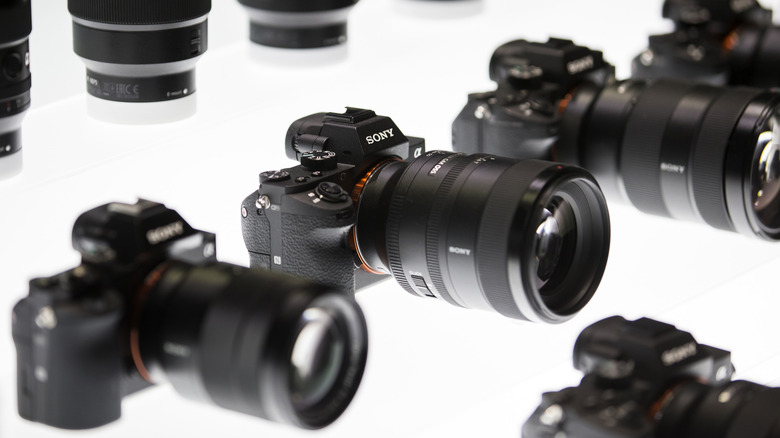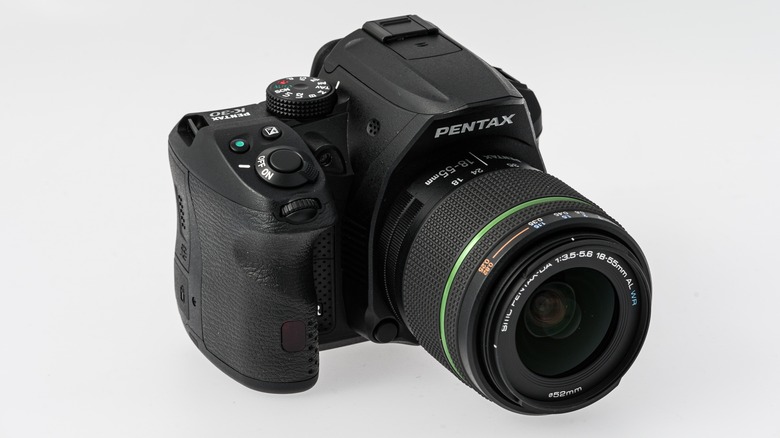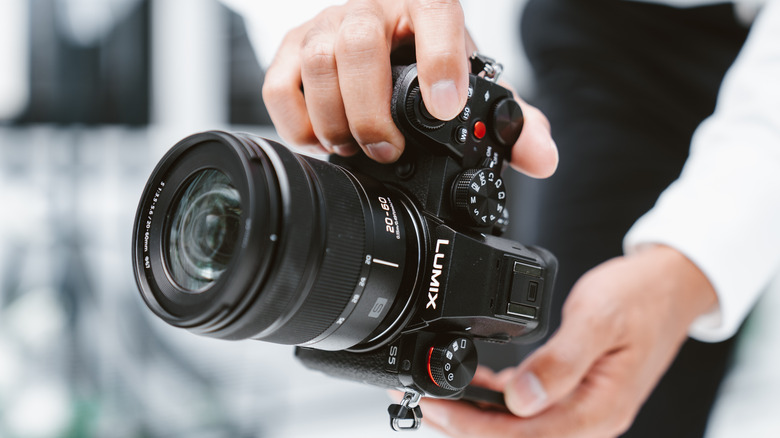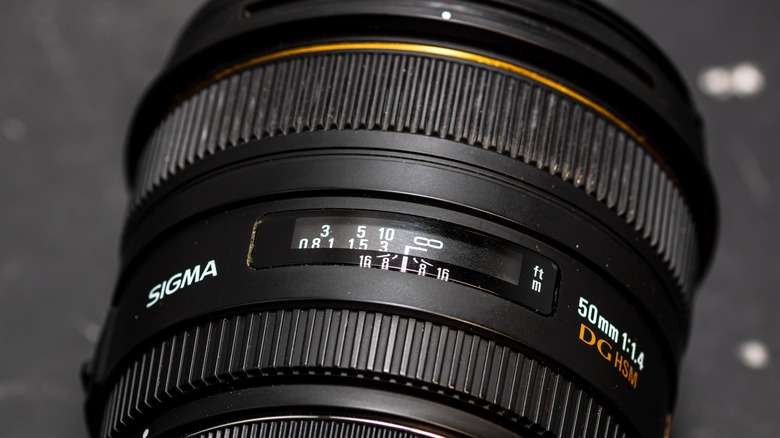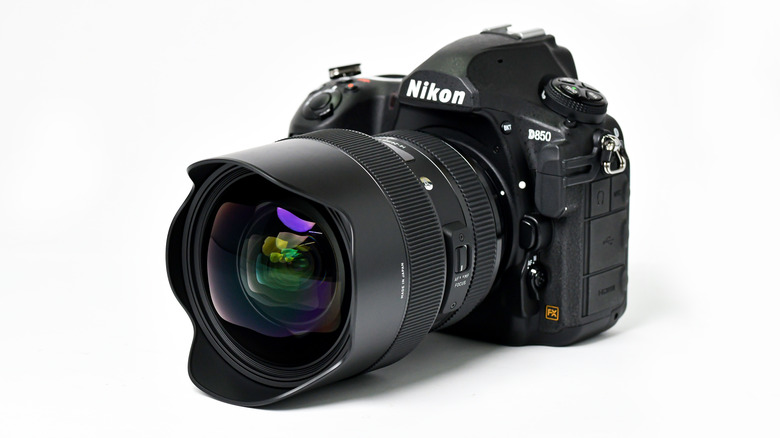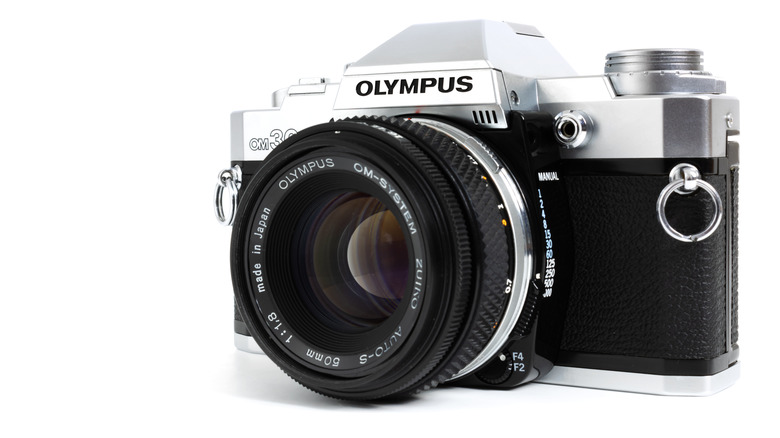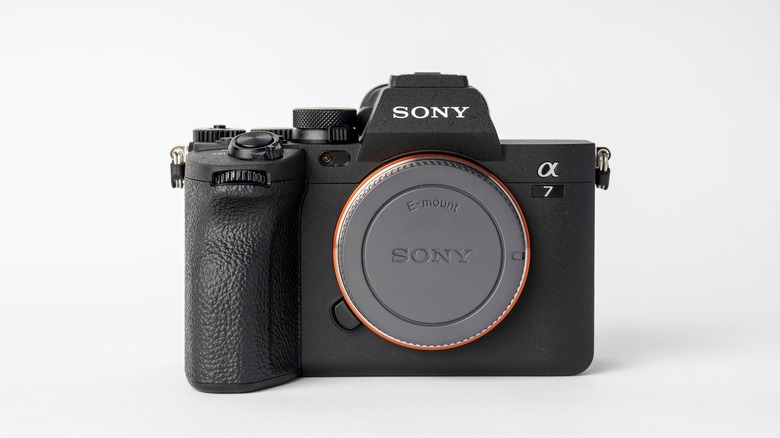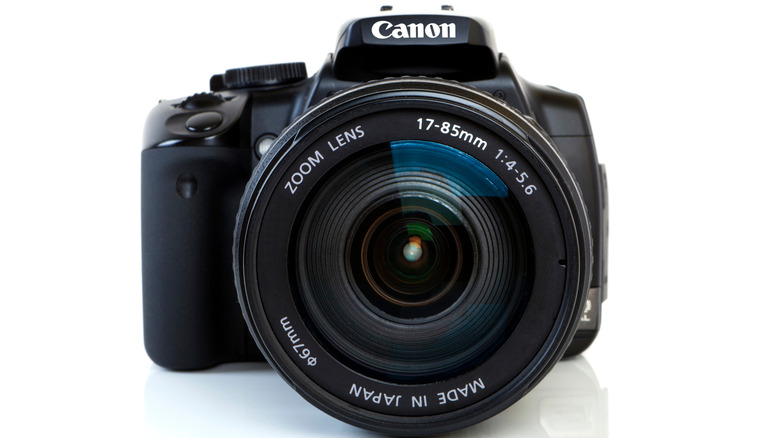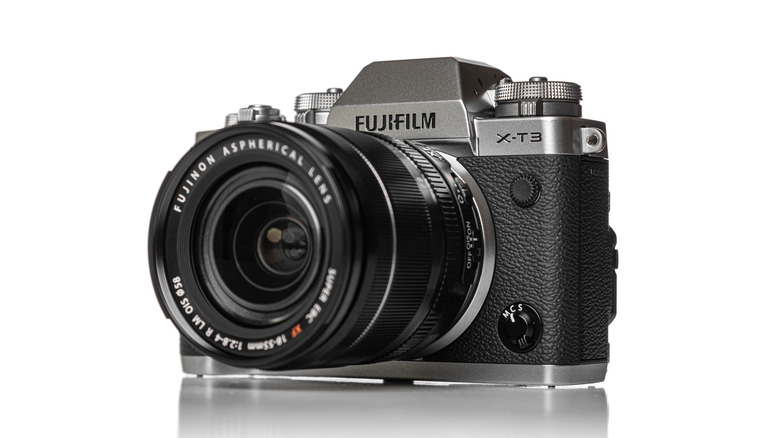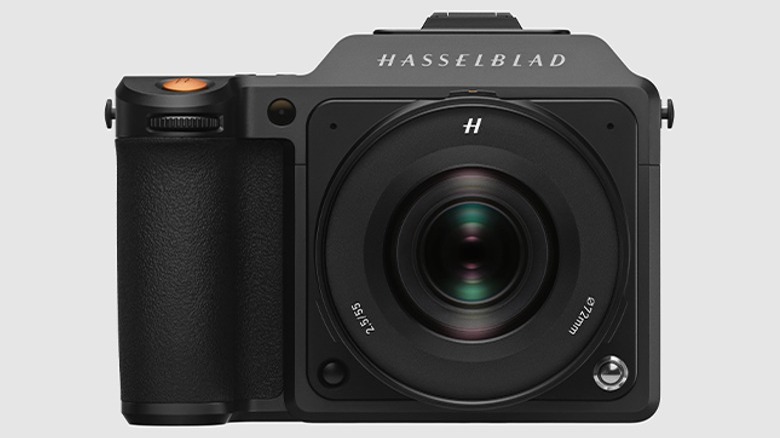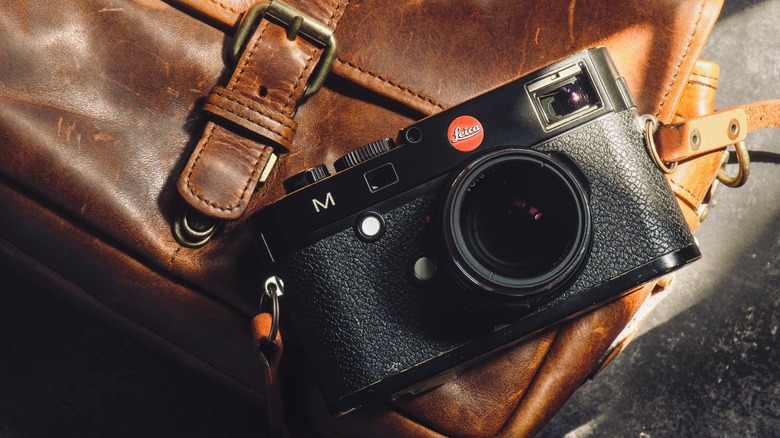Major Camera Brands Ranked Worst To Best
Picking a camera brand to start your photography journey is about as serious as getting a tattoo. Sure, the gear you pick isn't as permanent as ink under the skin, but for the price you pay, it might as well be. Camera technology continues to advance, and so does the cost of entry into the photography field. The line between hobbyist and professional cameras becomes blurrier all the time as baseline camera models become more and more capable of crossing impressive image quality thresholds.
This makes it unwise to make underbaked decisions when selecting the brand of your new camera — unless investing a chunk of money and then reselling at a painful loss is a luxury you can afford. Maybe you've heard compelling things about a different and you've gotten curious if the grass is greener. In any case, here's a comprehensive roster of the major camera brands ranked (subjectively based on personal experience and practically based on tangible comparisons) from worst to best.
Despite their rankings, none of these brands are bad by definition. Some just outperform others in competitive pricing, lens quality, user-friendliness, and other areas. Even the worst brand on this list produces, by varying standards, dependable cameras.
10. Pentax
We've used Pentax cameras in the past, and while there's plenty to like about this longstanding brand, there are a lot of reasons that this maker can't compete with others on the list. For one, the company was in no hurry to establish itself in the mirrorless camera game. Perhaps the brand thought its reputation as one of the dominant SLR camera producers would supply a lifetime of relevance. Either way, the king of film didn't pick up on the culture shift in the camera industry away from supplying one legacy model that'll stay relevant for years to churning out a new camera annually.
There's a difference between revering legacy film or DSLR cameras and clinging to an outdated medium as the only pillar of your brand philosophy. In 2019, executives at Ricoh, the Japanese company that owns Pentax, told Digital Photography Review that they believed that mirrorless cameras are nothing but a fad, and photographers will surely return to older mediums "in two or three years." This, of course, does not seem to be the case.
Beyond that, the menu design of Pentax digital cameras could be better, there is a distinct lack of quality telescopic lenses, and the brand has an overall more stunted range than other manufacturers. For these reasons, Pentax, while still a respectable brand in many ways, falls last on our list. However, we do really enjoy Pentax point-and-shoots and SLR cameras.
9. Lumix
Panasonic's cameras, Lumix, have a small but devoted following. They are decent performing hobbyist cameras with a great color output, but we've found the focusing capabilities of Lumix cameras and lenses to be a bit slow and soft. Sigma, a close competitor with Panasonic in terms of mirrorless cameras, has produced more advanced lightweight cameras with bigger viewfinders, more pixels, and faster frame-per-second capture rates.
Other reviewers have complained about unreliable auto-focusing, glitchy focus tracking, limited lens selection, and bare-bones camera features relative to price. Panasonic also isn't a high scorer regarding reliability and equipment longevity, ranked poorer than OM System (formerly Olympus), Nikon, Sony, and Fujifilm, according to a survey performed by Photo Review Australia (via Photo Rumors). Only 64% of responding Panasonic users rated their camera's reliability as good or excellent.
So while a Lumix camera from Panasonic probably won't let you down if you're a beginner, it may be better to start with more reliable brands.
8. Sigma
If you're a photographer, you may be more familiar with Sigma as a third-party lens label than as a camera body competitor. However, this Japanese manufacturer, whose cameras we've found to slightly outperform Panasonic, has a quite few options in the mix. Still, the fact that Sigma is a younger camera developer means its development focus can be a bit scattered. For instance, the brand's first mirrorless camera was optimized, somewhat randomly in our opinion, for the L-mount system of Leica lenses instead of its own proprietary SA-mount lenses.
The brand also has seemingly left behind its focus on ultra-heavy, high-performing equipment like its Art lenses and has shifted into developing lightweight, but still highly capable, cameras and lenses. Beyond that, Sigma's unique and quirky camera body design might be too strange and impractical for some.
Overall, while the Sigma fp L has gained some well-deserved popularity, we'd still like to see the brand do more to compete with the other big names in the camera world. Finally, we aren't huge fans of the fact that basic camera necessities, like a viewfinder and a hot shoe, are not implemented on the camera but are instead offered as separate modular attachments to purchase.
7. Nikon
Nikon is a well-established camera brand and, in many regards, competes neck-and-neck with the other names on our list. In our opinion, though, after using the unofficial trinity of camera brands — that's Nikon, Canon, and Sony — Nikon is the worst performer in low-light shooting environments, autofocus consistency and tracking reliability, and mirrorless camera range and support.
Beyond that, Nikon's image quality to gear price ratio is only average compared to others, and we don't find Nikon camera bodies to be as durable over years of use as Sony or Canon. This is especially true in dust resistance since the shutter on Nikon mirrorless cameras is always open when the camera is off.
Nikon's native lens range is okay, but it's noticeably less so for the brand's mirrorless cameras. Nikon's retroactive adaption to older lenses is also chaotic. For example, any EF lens made since 1987 can be adapted onto a mirrorless R mount Canon camera and still auto-focus, but Nikon's adapters don't support auto-focus on older lenses.
6. OM System
OM System, formerly Olympus, only narrowly beats out Nikon. For one, as noted by Photo Review Australia's survey, OM System is only seen as slightly more reliable than Nikon, as its cameras are rated as good or excellent in reliability by 95% of its users, compared to 92% of Nikon users. Nikon has a more dynamic range of older DSLR camera generations, but OM System mirrorless cameras are serious contenders.
The OM System OM-1 mirrorless camera has a larger viewfinder than the Nikon Z6 Mark II and has no video recording limit, while the Z6 Mark II is limited to 30 minutes. The OM-1 also has a blisteringly fast frames-per-second shooting rate that is over 100 fps faster than Nikon and is capable of recording higher-resolution video. The OM-1 also features more consistent autofocus and focus tracking while still managing to be a more lightweight camera.
While Nikon's Z6 Mark II does have a greater ISO range and reaches double to max ISO as the OM-1, we've never been all that impressed with Nikon's low-light performance in the first place. Nikon's mirrorless camera may still appeal to many photographers, but the OM-1 definitely hits heavy with appealing specs for videography.
5. Sony
Sony's popularity and customer loyalty have surged in recent years, and the manufacturer's mirrorless camera capabilities are finally making household camera names like Canon and Nikon sweat. Since Sony largely skipped producing the formerly dominant DSLR camera, some shooters may not have full faith in Sony as a camera brand yet. However, Sony's capabilities have been made clear with its mirrorless photography.
All the members of Sony's Alpha mirrorless series exhibit excellent low-light performance, video, sports and wildlife shooting, reliable autofocus, and tons of advanced features. Unfortunately, Sony's native lens family is still a bit immature especially compared to Nikon and Canon, but lens adapters mean that you don't have to sacrifice your beloved glass collection when switching from one of those two brands to Sony.
As any recently-converted Sony fans will tell you, this brand brings some truly stellar color, sharpness, and features to the mirrorless camera space.
4. Canon
So while we definitely prefer Sony and Canon over Nikon, what makes one of the former two better than the other? Truthfully, between the three most common camera names — again, that's Sony, Canon, and Nikon — the "it girl" brand changes every year depending on who's made the most recent splash with a new mirrorless camera. The Photo Review Australia survey does show cataclysmically poor reliability for Canon, which placed last with only 60% of users finding the brand's reliability to be good or excellent, but we've rotated through regular use of Canon and Nikon for many years and found Canon to be just as reliable as Nikon.
Between Sony and Canon, Sony may be taking a slight edge in mirrorless camera bodies and sensor technology, but we remain of the opinion that Canon makes better glass and has a more exhaustive list of native lenses. Plus, Canon's longer photography history means more entry-level camera kits are available — especially for DSLR cameras. Professionals and semi-professionals may see Sony as the better label, but we see Canon as a better all-around brand for the average photographer.
3. Fujifilm
Moving into the final brands included in our ranking, we see more manufacturers that aren't as common among hobbyist and semi-professional photographers — but Fujifilm is more and more piquing the interest of moderately-serious shutterbugs.
The autofocus system used by Fujifilm tends to be more capable than Canon, while Fujifilm camera bodies are typically more lightweight and easier to travel with. The difference in photo quality is enough from Canon to Fujifilm that some users don't even mind switching from a full-frame Canon sensor to a crop sensor on a Fujifilm. In addition, a significant strength of Fujifilm is the camera's depth-of-field indicator, which is an excellent tool for landscape shots.
All in all, Fujifilm cameras are very capable of capturing quality JPEGs, output beautifully sharp images, and are light enough to easily travel with. Better yet, they do all this while consistently delivering outstanding color. Fujifilm is still a bit of a niche name and doesn't cater much to videographers, but shooters who convert become fast loyalists.
2. Hasselblad
You may think of Hasselblad as an overpriced Swedish legacy camera brand — we used to, too. However, the truth behind Hasselblad is that the professional-grade sensors behind these cameras — 100 to 400 megapixels — compete in an entirely different arena than semi-professional brands like Canon, Nikon, and Sony. This is especially true since Hasselblad doesn't partake in pixel binning as the formerly-mentioned brands do. Hasselblad is considered by many to be an outperformer of Leica, but we put Leica over Hasselblad in this ranking because Leica is generally more obtainable (although still breathtakingly expensive) to photographers than Hasselblad.
At the end of the day, the quality of Hasselblad lenses is unmatched in sharpness and color clarity. The combination of powerhouse sensors and world-class lenses make Hasselblad a common choice for astrophotographers — a few Hasselblad cameras remain on the Moon today — and macro photography experts. For most of us, it's a bucket list camera brand, one made with impeccable craftsmanship quality and generations of thoughtful research and development.
1. Leica
The first Leica image we remember seeing was of an English woman walking down a rainy town street in a velvet peacoat. The raindrops falling in front of her were sharply defined, while behind her the clouds and street lamps melted into a gorgeous, moody bokeh. It was a gorgeous enough image to admit us into the Leica fandom for a lifetime.
We aren't the only ones who have a great appreciation for images taken with a Leica, and a BBC retrospective observes that Leica cameras have captured stunning images for more than a century. Today, Leica encourages photographers to break away from the dependence on autofocus, a challenge that we will remain forever grateful for.
This legacy camera manufacturer has focused on exemplary capabilities in the fundamentals of shooting without burdening its cameras with gimmicky tech features. That's not to say that Leica cameras are rudimentary — modern tech is there — but the approach creates more confident and creative photographers, in our opinion.
Camera capabilities aside, Leica boasts classic, handmade German craftsmanship. If well taken care of, a Leica camera — even a digital one, which by principle just doesn't last as long as a mechanical one — will give you many years of dutiful service.
